Year after year, the beauty of puthari just takes my breath away. The nights are cold and clear and from the hilltops, the stars shine with a clear, piercing light as the harvest date approaches. The days are filled with a kind of humming energy from the excitement of all the preparations that need to be made to welcome the harvest. Everyone who can spare the time and even some who cannot, make their way back to Coorg to celebrate puthari with their clans, at their ancestral homes. Somewhere between September and December, while we were all busy with our lives, a transformation has taken place across the valleys of Coorg. It is as if a silent breeze has blown across the fields and turned the tender, bright young green of paddy to pale gold. The moon grows fuller and heavier as the nights pass and by harvest time, the whole of Coorg is bathed in a wash of silver light. It’s a scene of such unearthly beauty, that it always brings back a line from long forgotten childhood stories: “an enchantment lay across the land”. All of Coorg seems to lie under a magical spell. 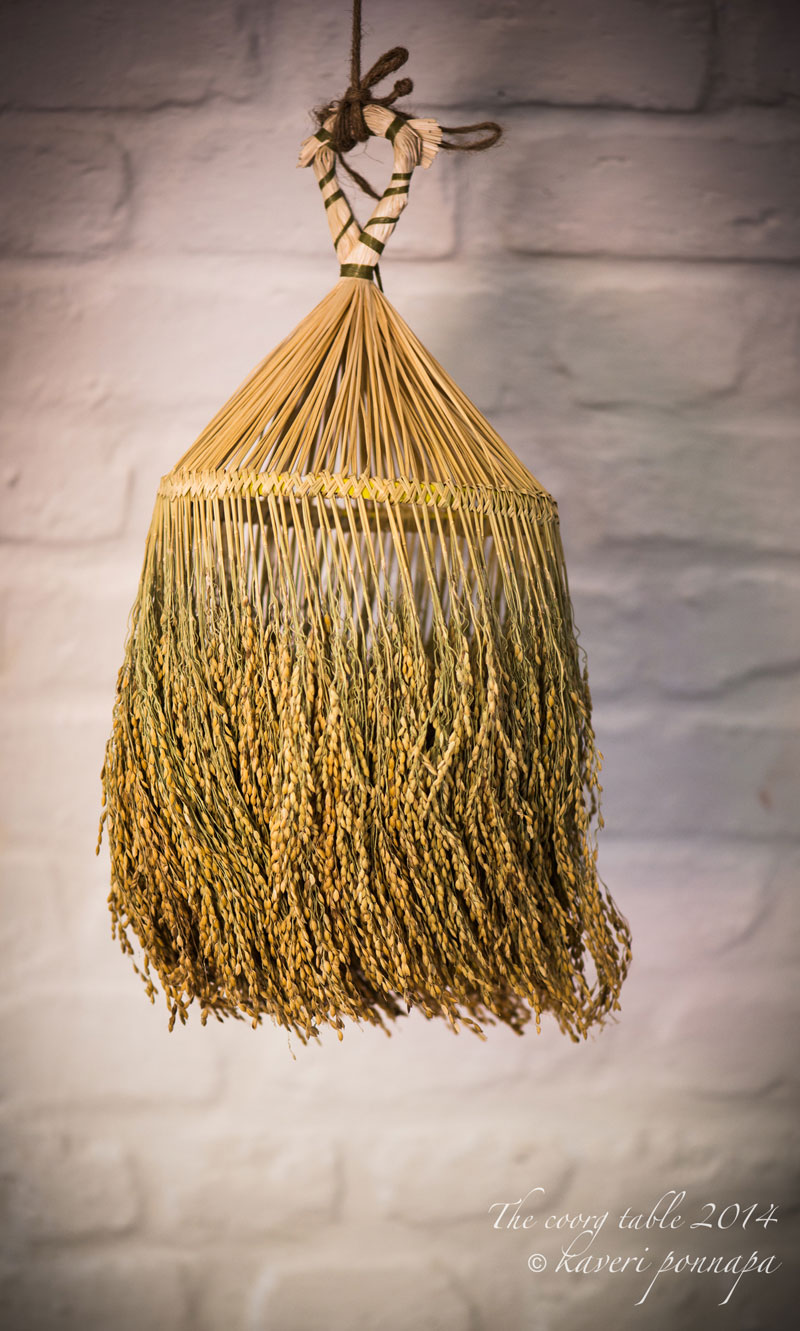 If you have been lucky enough to bring in a harvest at an ancestral home, the experience will be stamped on your memory forever. The warm glow of a lit lamp; prayers offered to ancestors for blessings and protection; laughter and gossip; palm prints of rice paste and bitter gourd stencils decorating walls and doors; feasts, music and dance, and a sense of anticipation and elation.
If you have been lucky enough to bring in a harvest at an ancestral home, the experience will be stamped on your memory forever. The warm glow of a lit lamp; prayers offered to ancestors for blessings and protection; laughter and gossip; palm prints of rice paste and bitter gourd stencils decorating walls and doors; feasts, music and dance, and a sense of anticipation and elation. 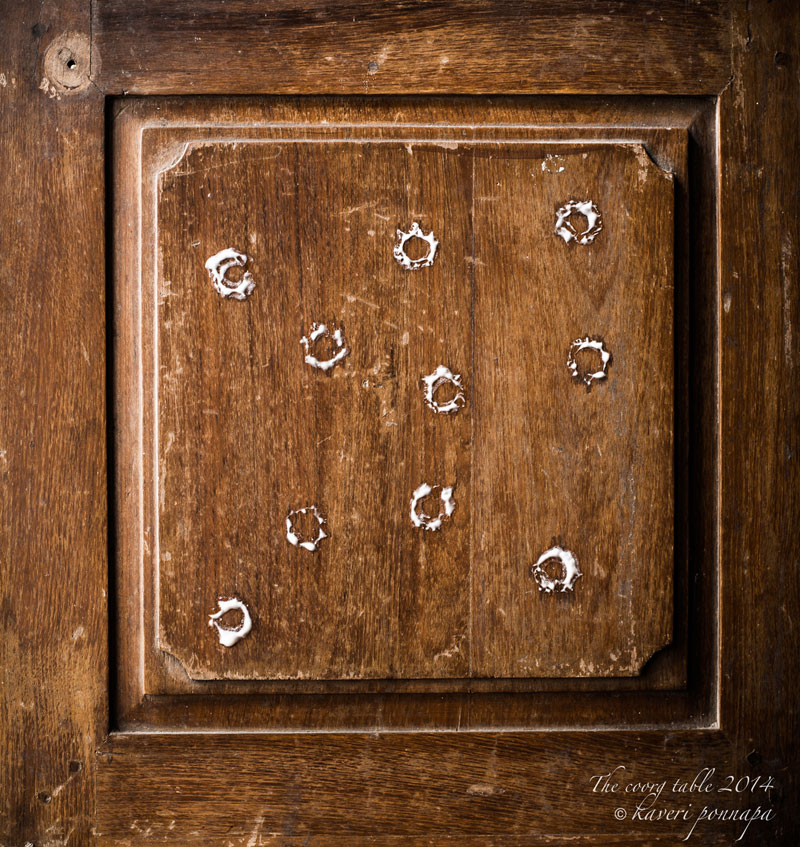 There are so many heart-warming customs that go into the growing of rice: like tying a knot in the first sheaf of ripening paddy, so that prosperity won’t slip away, then running to the granary to announce aloud that a rich harvest is on its way. The way the old harvest welcomes the new, the previous year’s paddy, rice and rice flour heaped up in a basket with every kind of auspicious food to greet the new sheaves of grain. The stalks of freshly cut grain that will decorate doorways, lamps and pillars, sometimes woven into beautiful clusters, inviting good fortune.
There are so many heart-warming customs that go into the growing of rice: like tying a knot in the first sheaf of ripening paddy, so that prosperity won’t slip away, then running to the granary to announce aloud that a rich harvest is on its way. The way the old harvest welcomes the new, the previous year’s paddy, rice and rice flour heaped up in a basket with every kind of auspicious food to greet the new sheaves of grain. The stalks of freshly cut grain that will decorate doorways, lamps and pillars, sometimes woven into beautiful clusters, inviting good fortune. 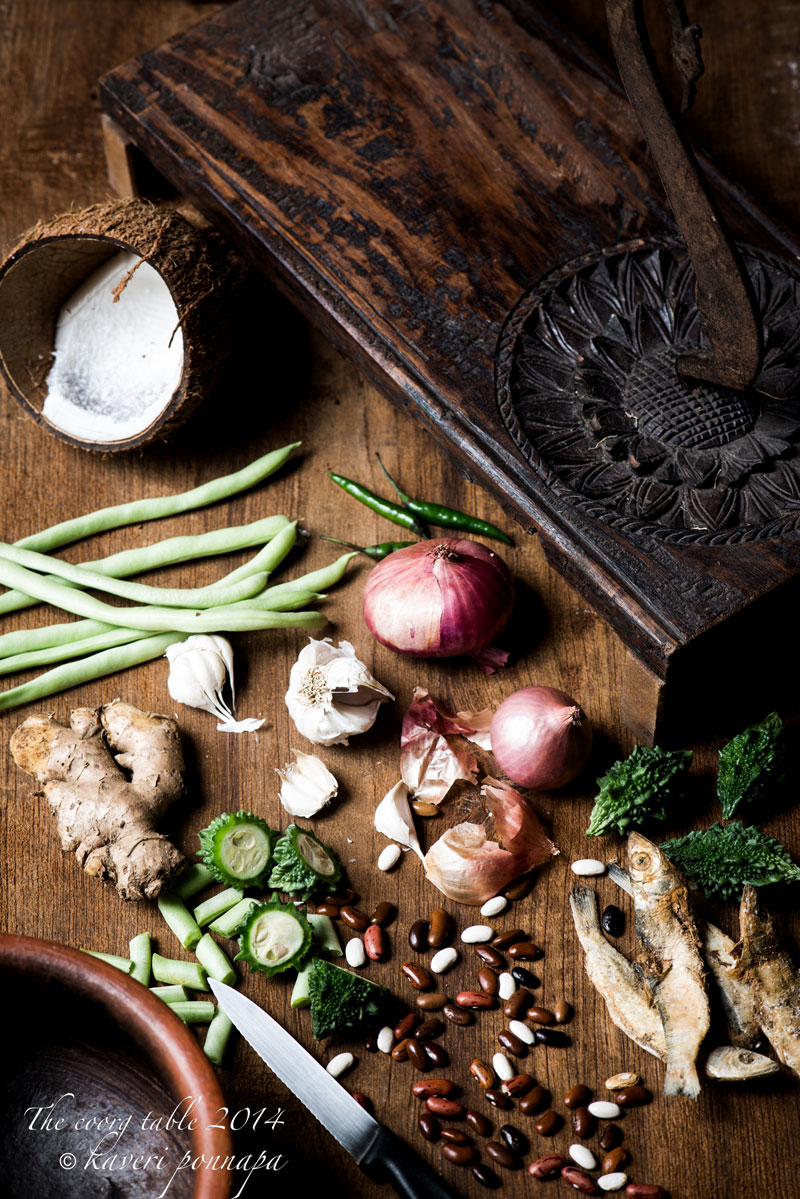 Puthari is an old night, filled with all the ancient magic of the land. The wick of the lit lamp on a platter, bobbing down a lane to the fields looks like a little star against the darkness; the slow beat of the Coorg band (valaga) as it plays draws you back hundreds of years to other, long ago harvests; the gunshots that announce the cutting of the first sheaves of new grain shock you back to the present. Your bare feet are cold on the damp earth, but you heart is filled with warmth as you listen to the old songs of thanksgiving, walking behind the singers, back to the gracious old house, lit up and glowing like an old oil painting.
Puthari is an old night, filled with all the ancient magic of the land. The wick of the lit lamp on a platter, bobbing down a lane to the fields looks like a little star against the darkness; the slow beat of the Coorg band (valaga) as it plays draws you back hundreds of years to other, long ago harvests; the gunshots that announce the cutting of the first sheaves of new grain shock you back to the present. Your bare feet are cold on the damp earth, but you heart is filled with warmth as you listen to the old songs of thanksgiving, walking behind the singers, back to the gracious old house, lit up and glowing like an old oil painting. 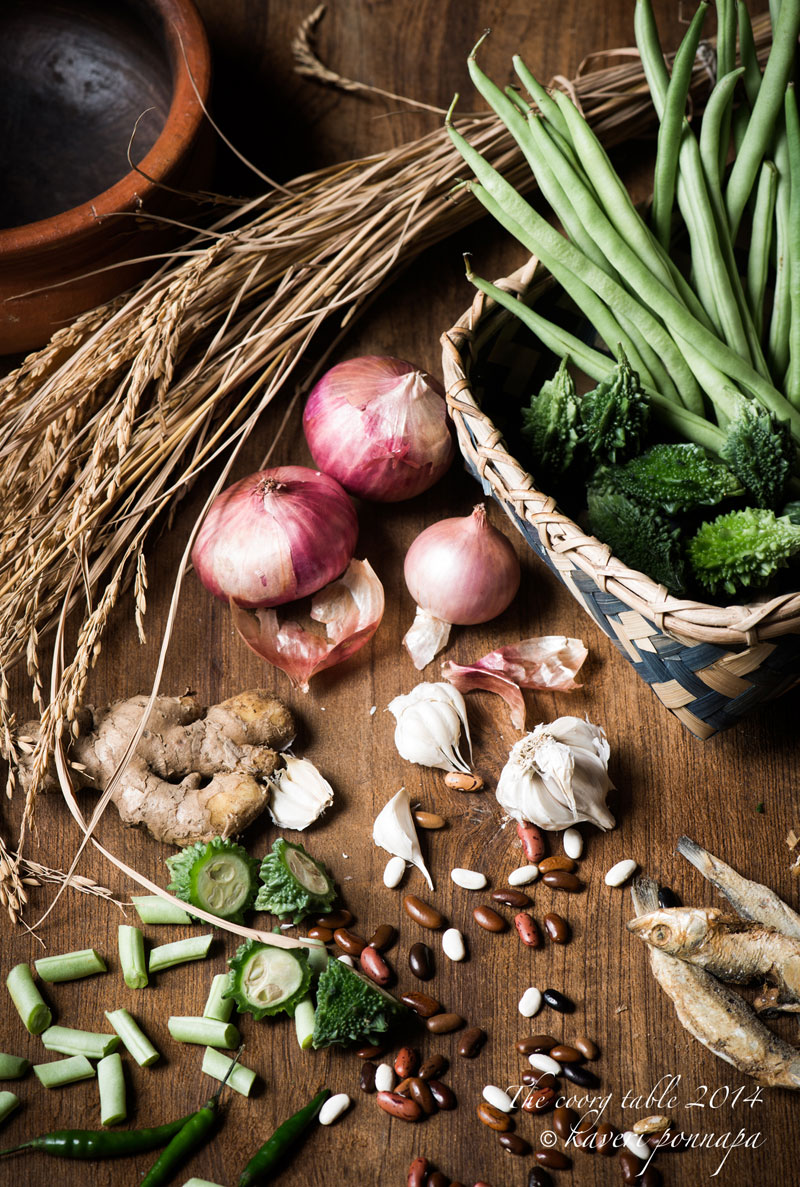 Back in the bustling house, the tables and benches are set out for the feast, and little portions of eleakki puttu are tossed onto the ceiling, offerings to the ever-present ancestors. There’s a timeless feeling to sitting down at those long tables with multiple generations, waiting for the oldest member of the clan to acknowledge the new harvest before we all eat together. It’s a promise from the land, a promise fulfilled after months of hard work: of rich harvests, abundant vegetables, fish in the streams and game in the forests to bring to our tables.
Back in the bustling house, the tables and benches are set out for the feast, and little portions of eleakki puttu are tossed onto the ceiling, offerings to the ever-present ancestors. There’s a timeless feeling to sitting down at those long tables with multiple generations, waiting for the oldest member of the clan to acknowledge the new harvest before we all eat together. It’s a promise from the land, a promise fulfilled after months of hard work: of rich harvests, abundant vegetables, fish in the streams and game in the forests to bring to our tables. 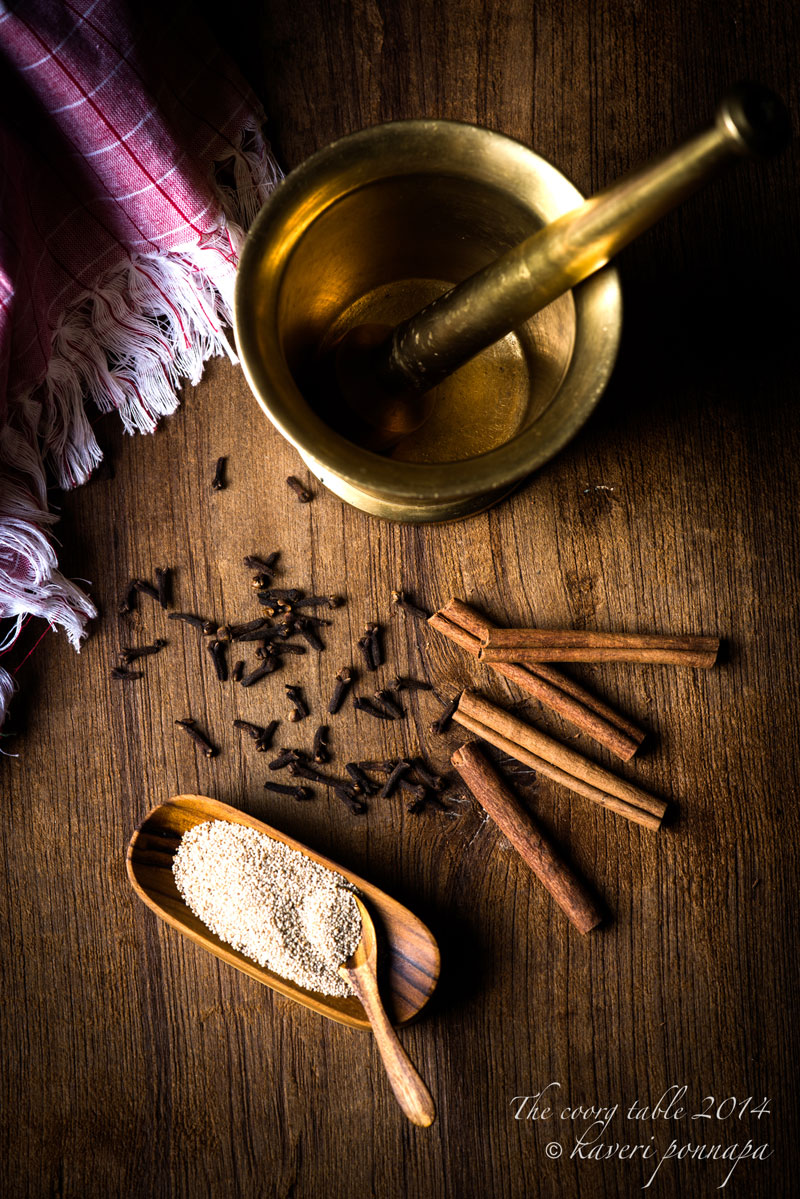
The feasts last many days, but there are some special dishes that belong to the season. The earthy stew called simply, puthari curry, made of fresh bean shells (chette), dried beans (kuru), bitter gourd and dried koile meen, a small, slender fish found in the flooded paddy fields and streams is a dish just made for cold winter nights that bring in the harvest. Thick, and sharp with kachampuli, served piping hot with akki ottis, it is unpretentious and satisfying, the dried fish adding it’s own intense flavour to the curry.
I had never eaten puthari curry, but thanks to the generosity of Barianda Mrs. Lalu Uthappa, Chef Naren Thimmaiah’s mother, I learnt how to make it. Her instructions were so simple to follow that the very first time I tried it, in no time at all, I was holding an earthenware pot filled with the most rich and enticing curry. I did not manage to get dried koile meen, despite my best efforts, so I used small, dried sardines instead – Lalu aunty sympathized with me, adding that the curry would taste even better with them. She made it sound so mouth-watering, I will definitely be searching Coorg for those little dried fish!
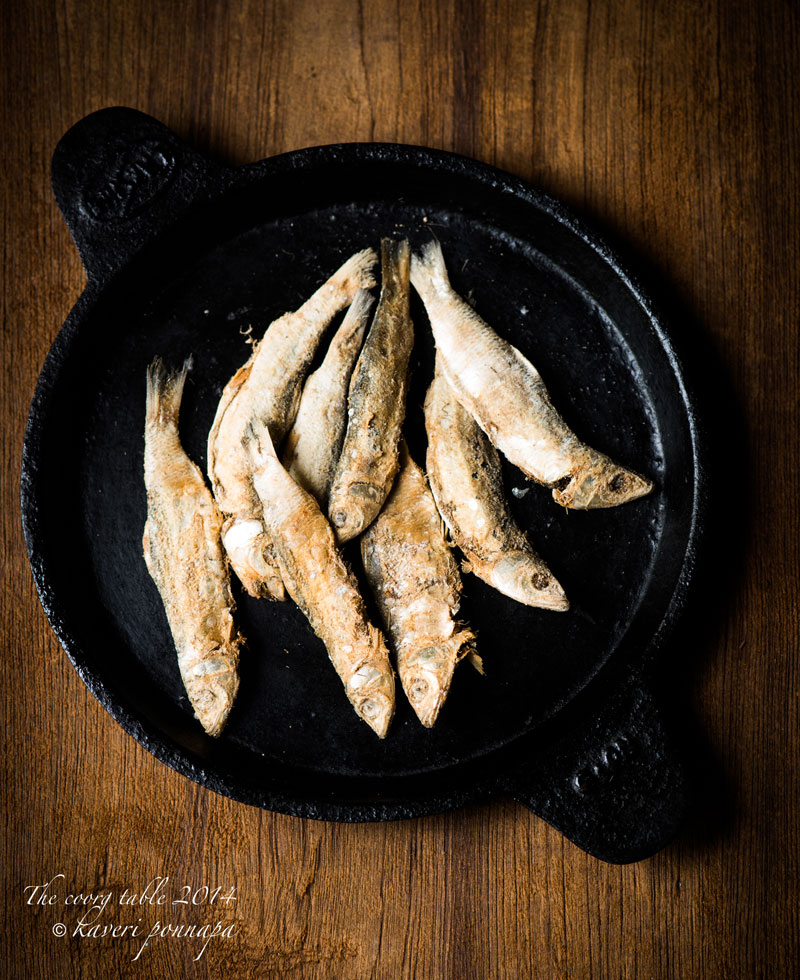 This is one of the prettiest curries I have ever cooked – in the terracotta pot, there is a wild mixture of bright greens and dark reds as the vegetables and beans tumble together, with the occasional silvery flash of sardine. By the time it cooks and thickens, of course you lose most of the colour, but it is a vivid reminder of the freshness and abundance that comes from our fields. I made the curry last, and enjoyed it all over again a few days later when the flavours had become richer and deeper.
This is one of the prettiest curries I have ever cooked – in the terracotta pot, there is a wild mixture of bright greens and dark reds as the vegetables and beans tumble together, with the occasional silvery flash of sardine. By the time it cooks and thickens, of course you lose most of the colour, but it is a vivid reminder of the freshness and abundance that comes from our fields. I made the curry last, and enjoyed it all over again a few days later when the flavours had become richer and deeper. 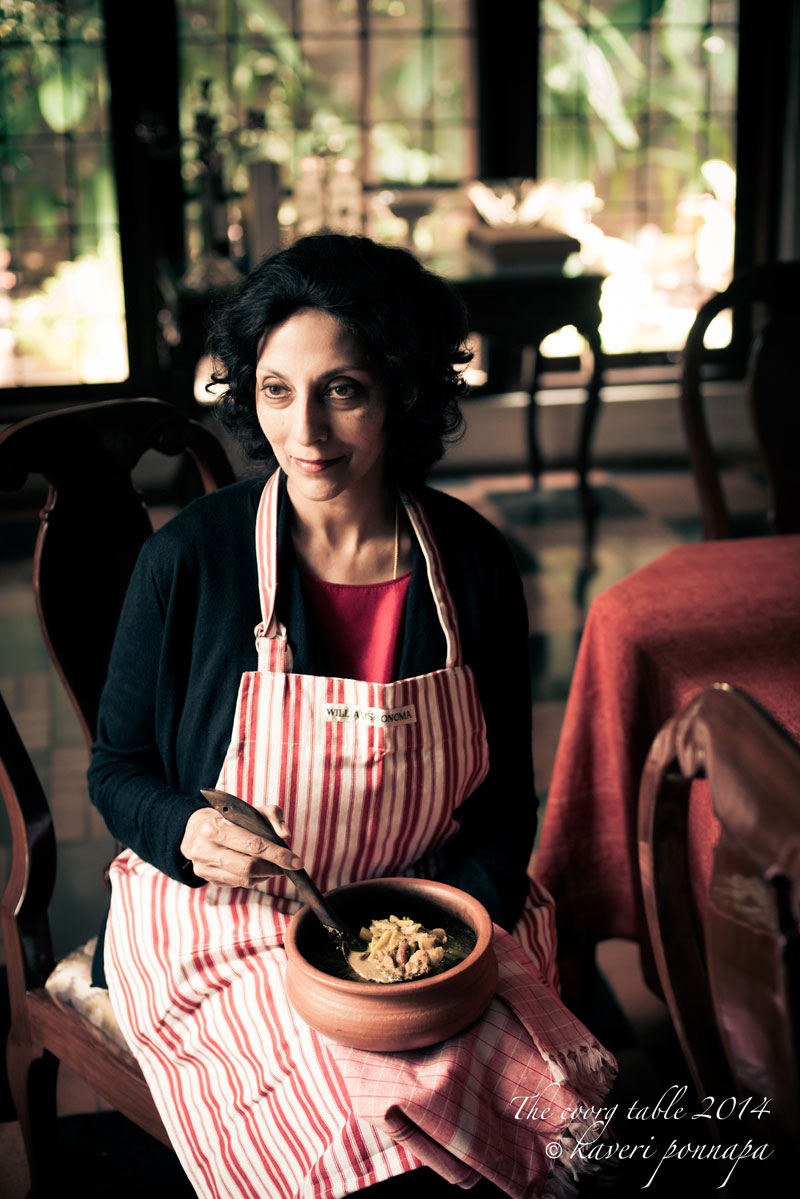 Last year, we sat for hours in the home of our good friends, all famous singers, listening to them sing the ballads of the land. We stayed for several hours, drank whisky, ate dinner with them and then left – they would sing through the whole night. We celebrated puthari with my grandfather’s clan, at his ancestral home in Nalnad, welcoming the harvest wrapped up in the hospitality and great affection of the clan we ate rice payasa cooked by the women, just as my grandfather must have done decades and decades ago, while the valaga played outside.
Last year, we sat for hours in the home of our good friends, all famous singers, listening to them sing the ballads of the land. We stayed for several hours, drank whisky, ate dinner with them and then left – they would sing through the whole night. We celebrated puthari with my grandfather’s clan, at his ancestral home in Nalnad, welcoming the harvest wrapped up in the hospitality and great affection of the clan we ate rice payasa cooked by the women, just as my grandfather must have done decades and decades ago, while the valaga played outside. 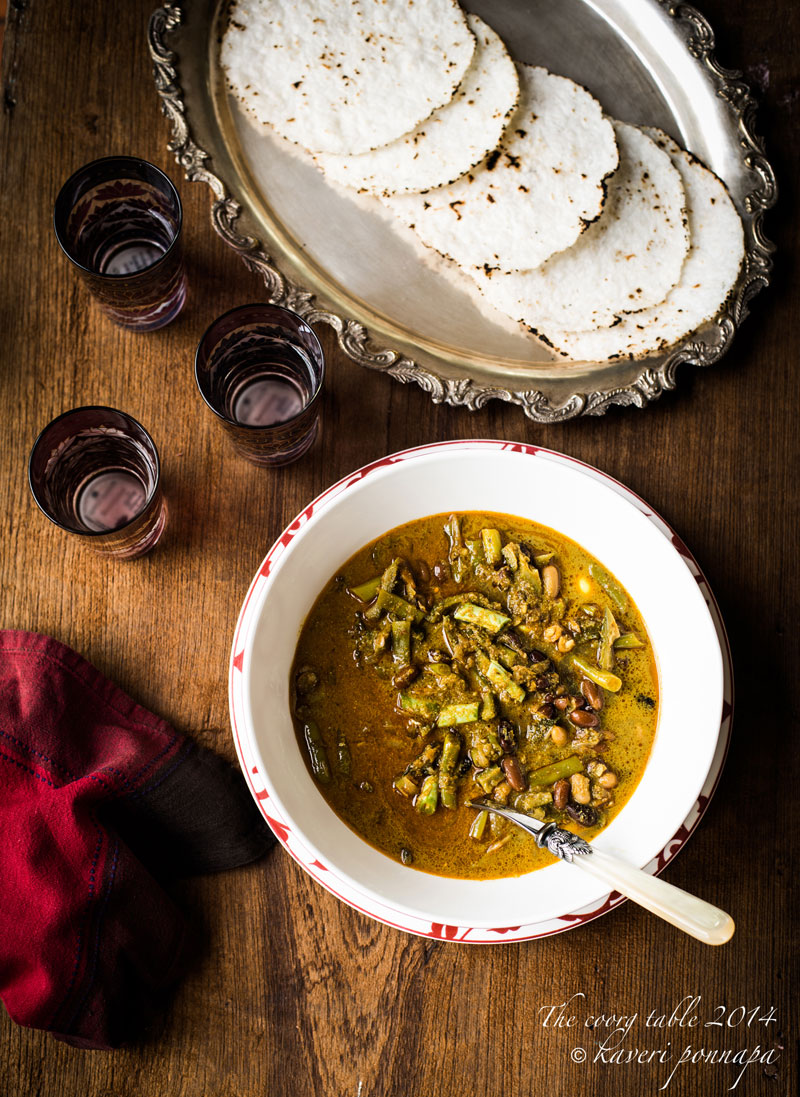
This year, although I cannot be in Coorg for the harvest, I will cook puthari curry, make akki ottis and payasa. My thambuttu powder is ready. I will welcome the harvest with a full table, and memories of last year’s celebrations: and remember the lovely lines from the old Coorg song: puthari comes in glory, but it slips away quietly. And end with a gentle plea, to never leave Coorg, puthari.
Bappaka Puthari Bannathe Baathe
Popaka Puthari Ennethe Pochi
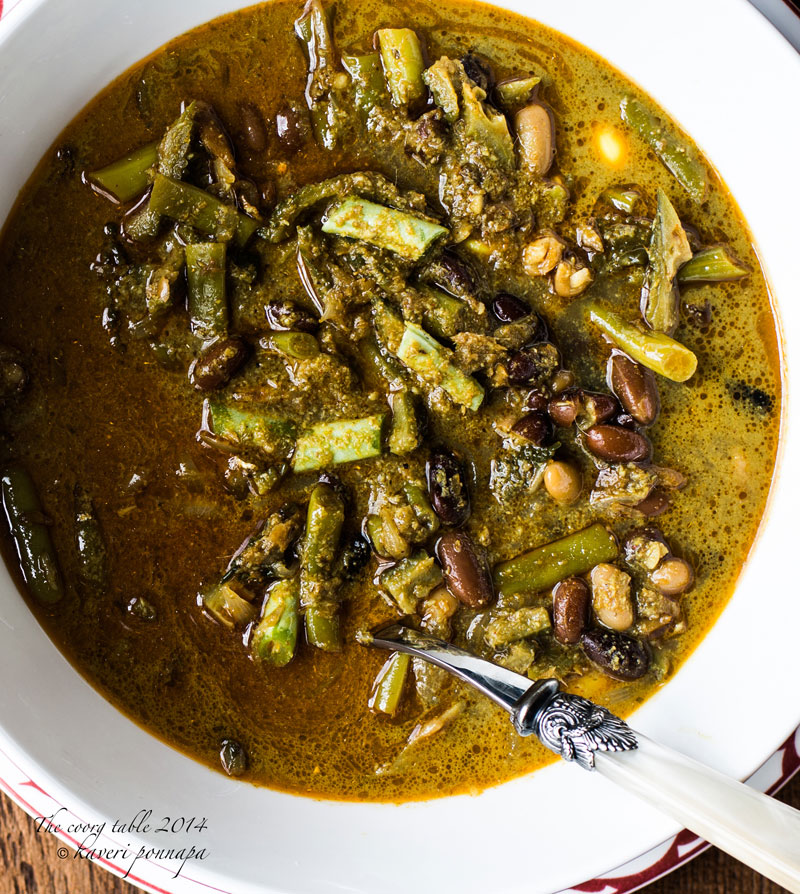
Image Credits: Nithin Sagi
All Food Styling: Kaveri Ponnapa
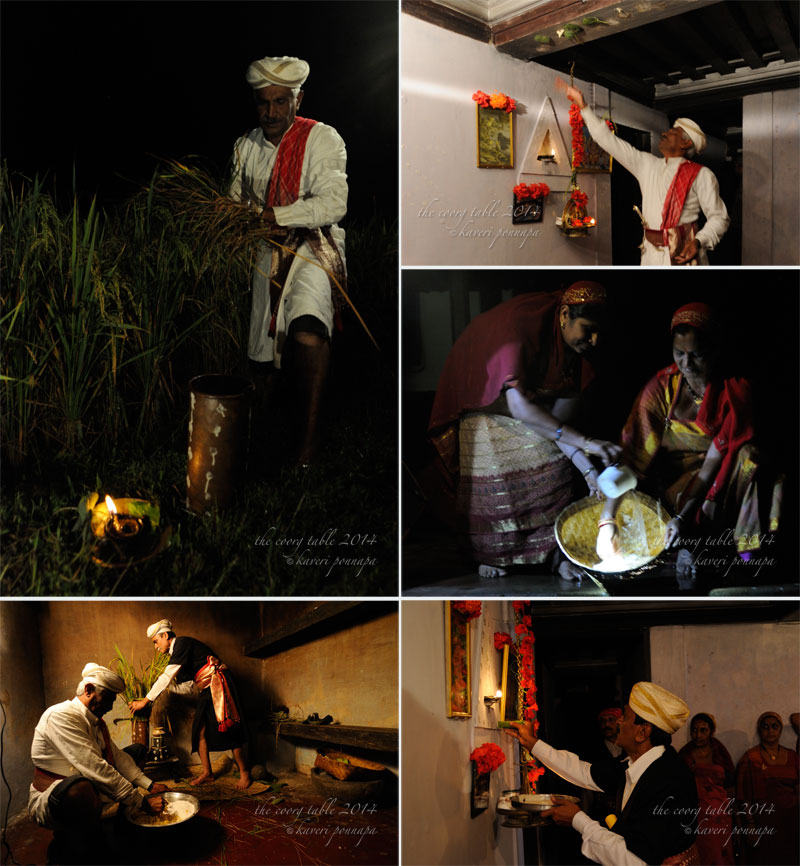
Image Credits: Sudeep Gurtu
Thank you for visiting this page. If you read something that you enjoy, or see an image that you like, please take a moment to write a response. Do look out for the recipes of all the food featured here in my upcoming cookbook.

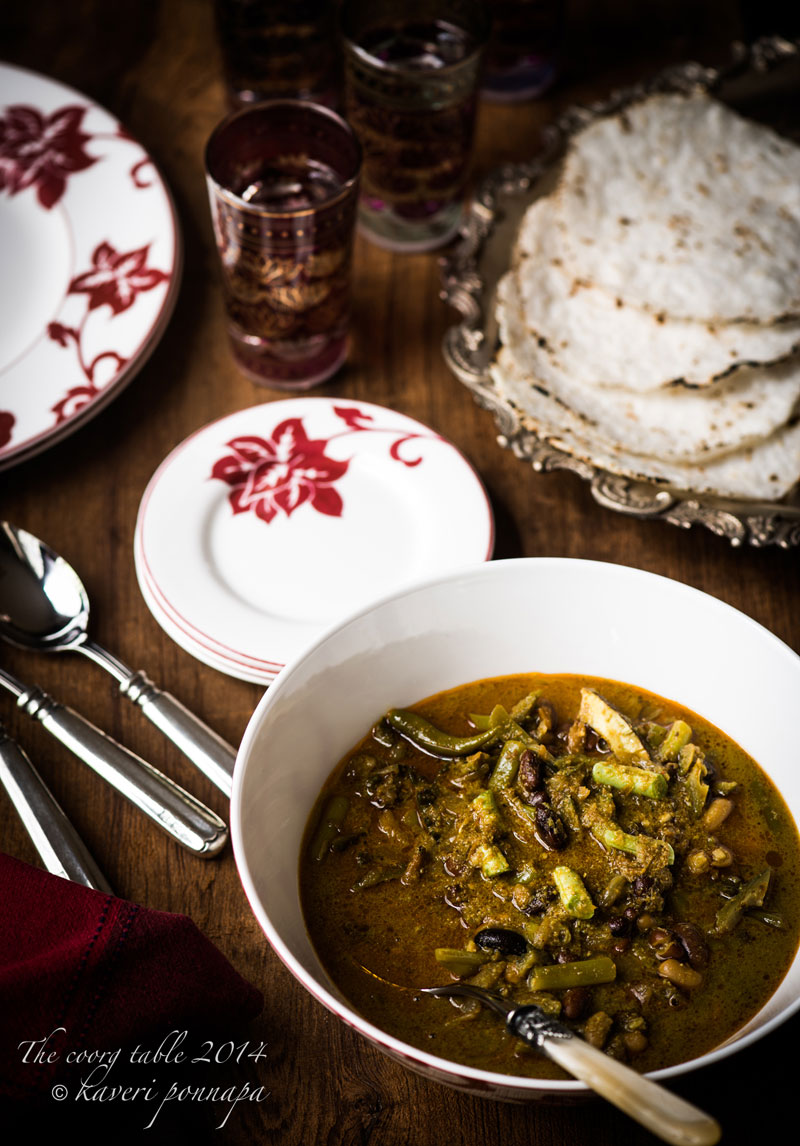
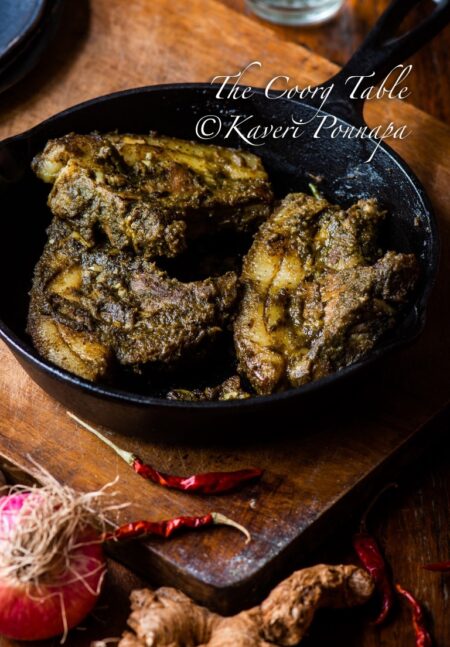
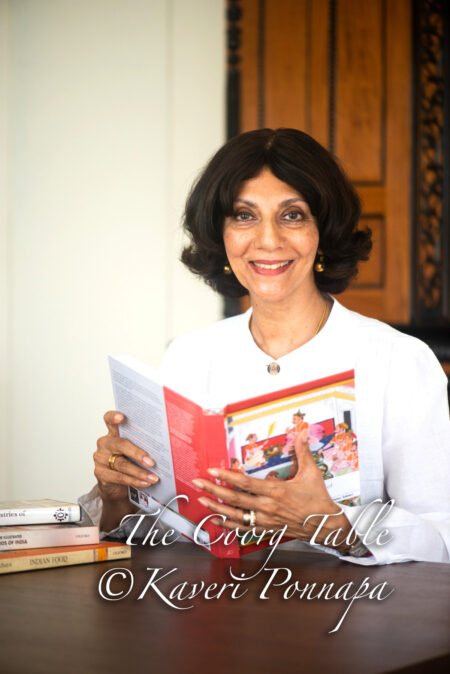
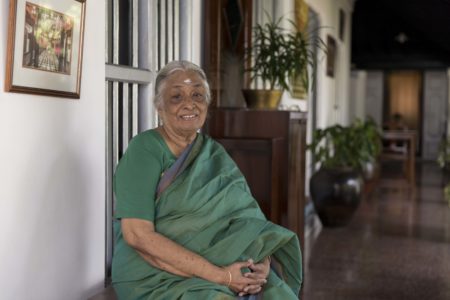
Hi Kaveri,
I can’t seem to find any recipe at the end of a write up where I used to find them before. Have they been removed intentionally? Or could it be my phone? I’m not sure.
Diya
Hello Diya, the recipes are going into a cookbook, so you will no longer find them on these pages. Please keep reading for updates, and if you enjoy a post, I’d love to hear from you! Kaveri
Cant wait to try this !
Yummy.
Hi Kishore, this is an earthy curry, rich in flavours and I absolutely love it. It’s interesting how all the different tastes come together in the final dish. And with akki ottis, one could not really ask for more. Warm wishes.Kaveri
Hi Kaveri, have been noticing your Blog and extremely well done pictures. Where do i find the recipe- for me i find the text is well written – but somehow i think i have missed on the recipe. Could you please let me know. thanks mini
Hello Mini, I’m delighted that you like these posts and the blog. Do write to me at: kaverikamb@gmail.com for recipes for any specific dishes that you like on the blog, and I will be happy to share them with you. Warm wishes.Kaveri
A lovely description of Puthary feast with beautiful photographs by Kavery Ponnappa. Congratulations to her.
Vv Nice and vv good your coorgi food recipes. KAVERI.PONNAPA
No more to tell.
Hello Parvathy, thank you for visiting this page, and for you kind words. I’m so happy you like the recipes, it’s always nice to hear from a reader, it always encourages me to do more. Do keep reading these pages. Warm wishes.Kaveri
A very nice and inspiring blog…while all other blogs concentrate on western kitchen this is one blog which brings about the treasure of our own kitchens..awesome pictures…and I really loved your writing so much…a great applause to you
🙂
Hello Sowbaranya, thank you very much for writing in and for your appreciation. The Coorg Table is a labour of love – ours is such a small community, with rich food traditions, and I was fortunate to have grown up eating the food and seeing how it was cooked by some of the most talented home cooks. This is my way of sharing all that I learnt, and keeping the tradition alive in the modern world. I’m so glad you like the pictures too. Do keep reading these pages, and let me know when you try out any of the recipes. Warm wishes, Kaveri.
My wife Susheela and me reallyy appreciated the Paddathi of Puthari Namme that you have notified. We liked it and enjoyed during the Namme. Please be writing. Namasthe.
I am delighted that you liked the post and recipe, Puthari is a really special time for all of us in Kodagu. Please do keep visiting this page, and you can also follow The Coorg Table on Facebook. Best wishes. Kaveri.
Thank You for the nostalgic journey through the pictures, words and tasteful flavours. Happy to learn more of our rich traditions.
Please do keep visiting The Coorg Table, and share with food-loving friends! Best wishes. Kaveri.
Very nice effort to keep traditions alive. Keep going.
Hello Ravi, so glad you liked the post, and thank you for your good wishes. I hope you read the other posts and pages too, and share the recipes. All good wishes. Kaveri.
Lovely images with beautiful narration……Nice to read your articles….Thank you….Happy Puthari……
A very Happy Puthari to you and your family, Kaverappa, with every wish for happiness and prosperity in our beautiful land. I’m so happy you like the images and post – every one of us has memories of Puthari, I hope this brings back some good ones for you. Warm wishes. Kaveri.
I am going to try this one asap. I might use a mix of fresh fish and dried shrimp as I wont get that fish here. Lovely recipe indeed. Will try making nooputtu with this 🙂
Hi Sangeeta, this is a beautiful, earthy curry that brings all the reminders of harvests and fields and all the bounty they bring. At a certain part of the year, our streams and flooded paddy fields are full of a tiny, slender fish, much-loved for its intense flavour. These are dried and used in this curry. Since I did not have them, I used dried sardines instead. In case you can’t get dried sardines, I would suggest just the dried shrimp or any dried fish rather than fresh. The intensity of dried fish is what works magic in this curry. Good luck, and enjoy the curry! Warm wishes.Kaveri.
Dear Kaveri
Thank you ever so much for sharing such a special family recipe. I will definitely be cooking it, although I am not fond of bitter gourd.
Shobha
Hello Shobha, This is a delicious harvest curry that I do hope you will enjoy. If you don’t care for bitter gourd, I have a suggestion to make – drop the bitter gourd slices into boiling water which has a pinch of turmeric added to it and blanch them. This takes just a few minutes. Then drain away all the water, and add the blanched vegetable to the curry, and cook according to the recipe. This helps reduce the bitterness to a great extent. Then you can savour all the rich, earthy flavours of the curry. Good Luck! Warm wishes.Kaveri.